
كأس العالم قطر 2022 على وشك الافتتاح أخيرًا!
وفي تمام الساعة السابعة مساء يوم 20 نوفمبر بتوقيت الدوحة، وهو الساعة 0:00 يوم 21 بتوقيت بكين، ستنطلق صافرة البداية على ملعب الخليج. وهذه هي المرة الأولى في تاريخ كأس العالم التي تدخل منطقة الشرق الأوسط، وستقام نهاية العام للمرة الأولى. دع المشجعين الصينيين يشاهدون تكوين اللعبة، من حفل شواء صغير مع بيرة في الهواء الطلق إلى سترة قطنية كبيرة مع وعاء ساخن حول الموقد.
ولأن قطر شديدة الحرارة، فقد وصلت أعلى درجة حرارة هذا الصيف إلى 48 درجة مئوية، وتم تغييرها إلى الشتاء المحلي بموجب التنسيق.
ومع ذلك، فهو بعيد عن أن يكون رائعًا.
وتتوقع عمليات المحاكاة التي أجرتها جامعة نوتنغهام أن يكون الطقس أكثر سخونة داخل الملاعب المزدحمة. يمكن أن تصل درجة الحرارة في القاعة إلى 35 إلى 37 درجة مئوية، وقد تصل درجة الحرارة المركزية إلى 42 درجة مئوية. أبعد بكثير من نطاق درجة الحرارة المريحة الموصى بها من قبل FIFA: من 20 إلى 25.5 درجة مئوية.
كيف نفعل؟ ولوح قطر بيده وقام بتشغيل المكيف!
فقط تخيل أن نفخ مكيف الهواء في مكان مفتوح يتسع لعشرات الآلاف من الأشخاص يشبه فتح جميع النوافذ في الغرفة أثناء تشغيل مكيف الهواء على أقل درجة حرارة ونفخه بقوة. يبدو وكأنه الكثير من العمل والمال.
وقد قامت قطر ببناء سبعة ملاعب مكيفة من هذا النوع. (جاري تجديد باقي استاد خليفة الدولي)

1. كم عدد الخطوات اللازمة لتبريد الملعب المفتوح؟
ما مدى حرارة قطر؟ وقال بعض مستخدمي الإنترنت: “في المرة الأخيرة التي أقيمت فيها بطولة كأس العالم في آسيا، كانت كرة المباراة تسمى "النيزك الناري الطائر". لو أقيمت بطولة كأس العالم في قطر في الصيف، لكانت درجة الحرارة بين 40 إلى 50 درجة... أعتقد أن الجميع سيسافرون بالطائرة. كرة نارية.”
بغض النظر عن حقيقة أن لاعبي كرة القدم غالبًا ما يلعبون الألعاب بغض النظر عن الطقس، فإن درجة الحرارة المرتفعة ستظل لها الكثير من التأثيرات.
في كأس أوروبا 2004 في البرتغال، كان أداء الفرق جيدًا في الجولة الأولى، ولكن مع ازدياد حرارة الطقس، فقد الفريق زخمه وأصبحت وتيرة المباراة أبطأ وأبطأ؛ كانت اللعبة بطيئة جدًا، وكانت اللعبة الليلية أكثر عدوانية.
علاوة على ذلك، فإن الاستاد الذي تم بناؤه بسعر كبير لا يمكن استخدامه إلا كل شتاء، وأداء التكلفة منخفض للغاية. من أجل الاستفادة الكاملة منه في المستقبل، بدلاً من تحويله إلى شيء خامل ضخم بمجرد انتهاء اللعبة، يعد التبريد أمرًا ضروريًا.

في كأس العالم الماضية، وفي مواجهة ارتفاع درجات الحرارة، تكوين أ “ملعب مغلق بالكامل + جيرسي قابل للتنفس” تم اعتماده عادة. وقد ذهبت قطر إلى أبعد من ذلك، حيث ضخت الكثير من البراعة في تصميم الاستاد.
أولاً، أبعد الهواء الدافئ عن المبنى قدر الإمكان.
ومن أجل الحد من أشعة الشمس المباشرة، تقع معظم الملاعب الثمانية لكأس العالم في قطر على المحور الشرقي الغربي. وبهذه الطريقة، عندما تكون الشمس مشرقة خلال النهار، يمكن ضمان أقصى قدر من الظل للملعب والمدرجات.
يمتص اللون الأسود الحرارة، لذلك تستخدم معظم الأجنحة الثمانية الأسطح ذات الألوان الفاتحة. وحتى ملعب الخليج، الذي تم تصميمه في الأصل على أساس الخيمة البدوية التقليدية في الصحراء، كان لا بد من تغيير لونه من الأسود إلى الأبيض للتبريد. وكان التأثير فوريًا: انخفضت درجة الحرارة الداخلية بمقدار 5 درجات مئوية في ضربة واحدة.


من أجل تجنب “غزو” of sunlight as much as possible, the Education City Gymnasium, one of the eight venues, is designed as a sparkling diamond. The rhombus-shaped facade has super high sunlight reflectivity, making it dazzling and eye-catching; the site is also built slightly lower than the ground to control the temperature inside the site.
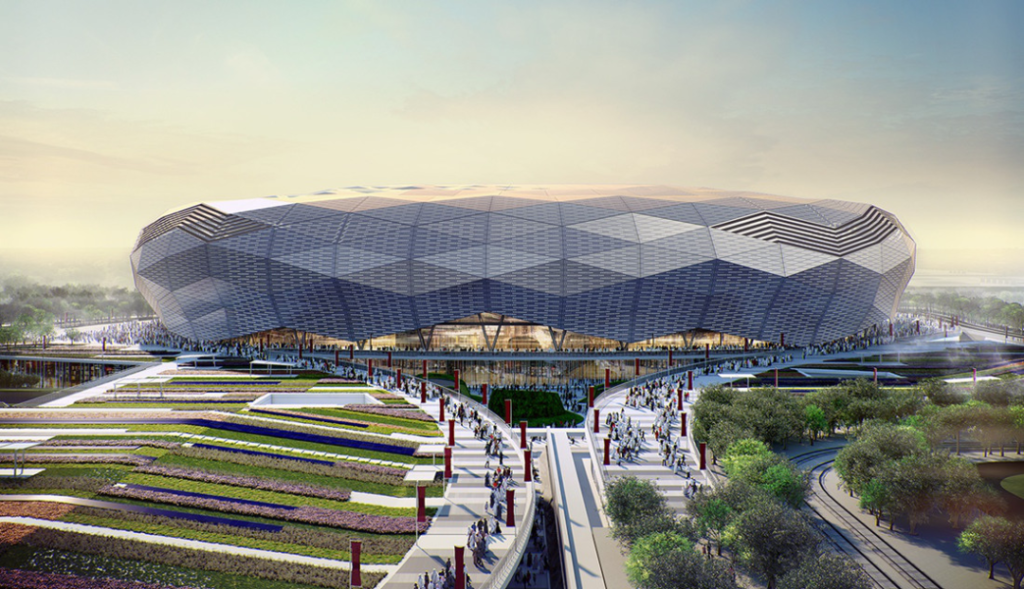
They also used smoke and lasers to conduct a wind tunnel simulation on the 3D printed venue model to observe the flow of air under different wind speeds and air pressures. Let the curvature of the roof disperse the hot air as much as possible, without entering the interior of the venue.

If you can’t move it away, you can also close the roof.
Take the Al Wakrah Stadium designed by the famous architect Zaha Hadid as an example. Its roof is retractable and can be closed within 30 minutes. Like a sail covering the pitch, it cools the spectator area down to 18°C. Even when the roof is open, the folds of the roof guide the air towards the perimeter…
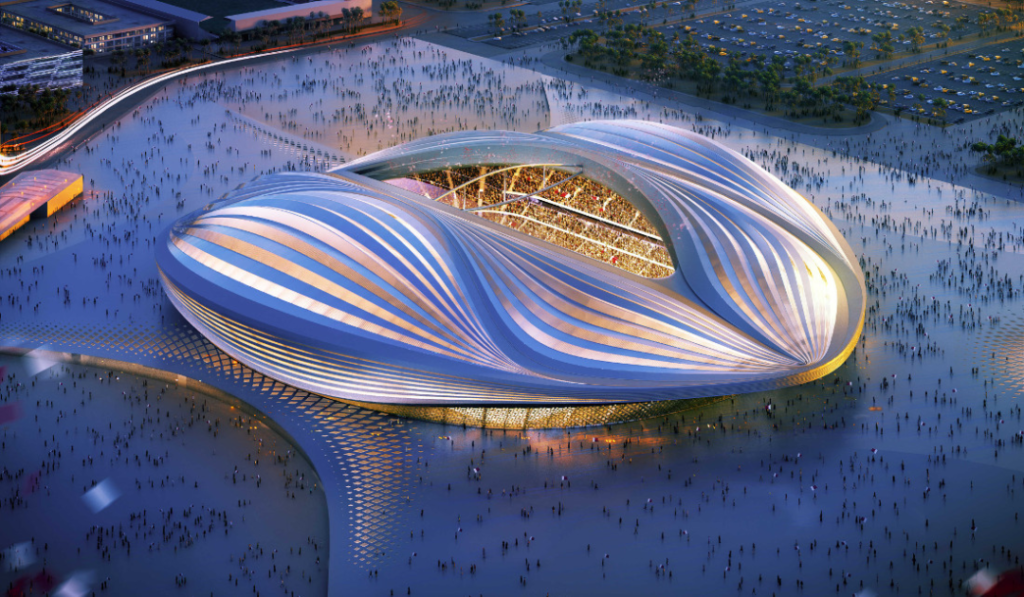
There is another idea that seems a bit surreal. Back in 2011, Qatar University developed a solar-powered “cloud” for the World Cup. It is raised by an onboard helium bag and positioned by remote control, and can cast a shade on the court when the sun is shining.
As for whether it is really used in this tournament, let us wait and see.

The outdoors were not spared either. In Doha, the capital of Qatar, many roads have been painted bright blue to absorb less solar radiation and reflect ultraviolet rays, thereby reducing the body temperature of passing pedestrians and motorists.
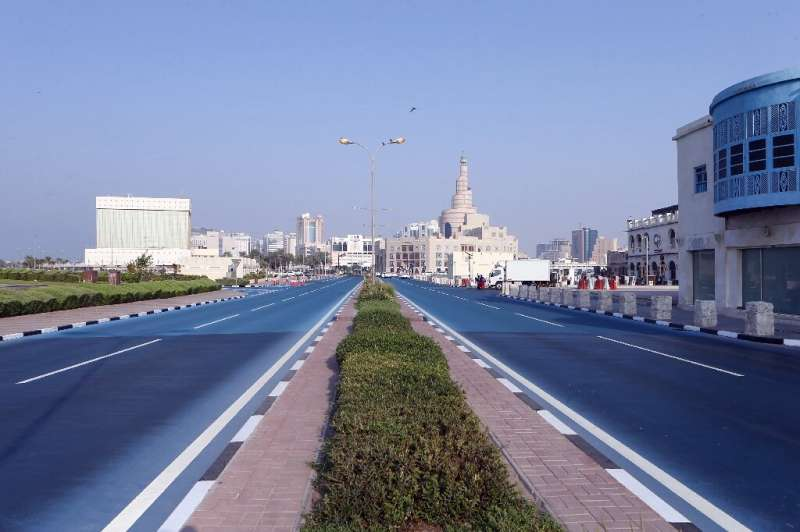
But the most important thing is to rely on a huge air conditioning system
To put it simply, during the World Cup, the venues will continuously deliver cold air to the venue to create a two-meter-high, “completely isolated” cool bubble. When the room temperature is the lowest, it will be 20°C lower than that outside the venue.
2. What kind of system is this?
First of all, under the seats of the auditorium, there are hundreds of vents “hidden”, just like the small nozzles of the shower head. They will blow out low-intensity but dense cold air from the height of the audience’s ankles, allowing the air to circulate gently instead of “whistling” to make people headache.
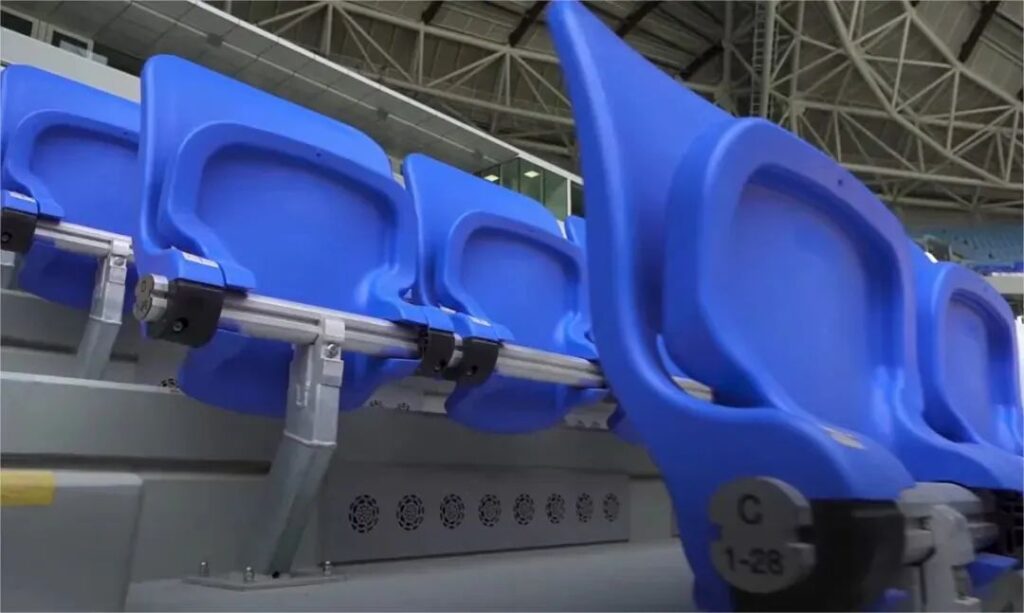
For players, the need to cool down is even more urgent.
According to research, in a single game, each player has to run more than 10 kilometers and consume more than three liters of sweat. In Qatar’s tropical desert climate, failure to dissipate heat well can lead to heat exhaustion.
Therefore, many large nozzles are placed around the court. Each of these air outlets has a diameter of more than tens of centimeters, and the wind is very strong, bringing cold air to the contestants and referees in the field.
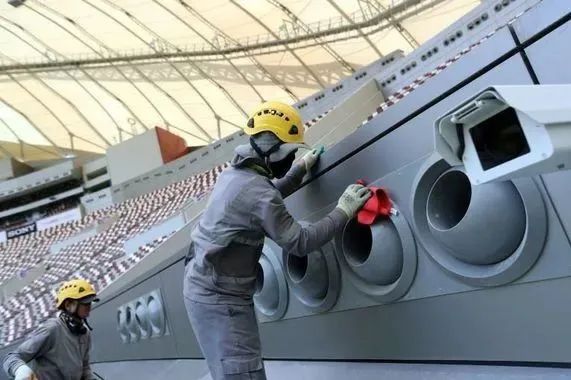
The special feature of this system of “large and small nozzles” is that its purpose is not to cool down the entire venue, but to “directed cooling” more precisely, and only acts on the area where people appear. That’s less than one-tenth the size of the entire space. Engineers have developed a set of precise fluid dynamics models: by measuring the speed and angle of air flow, the angle of each air outlet is set.
An ultra-thin giant air-conditioning barrier no more than 2 meters above the ground came into being.
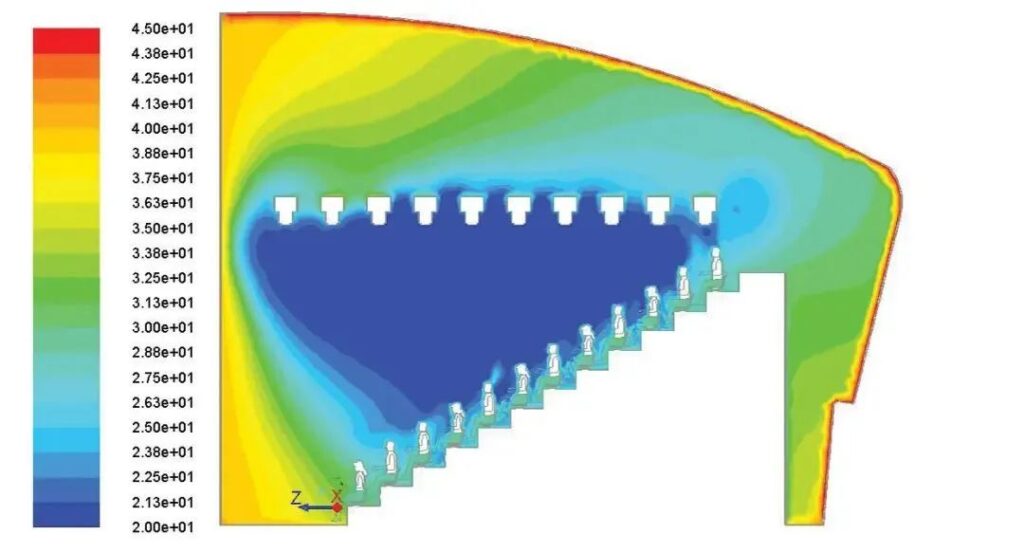
However, if the air conditioner is too strong, there will still be some risks.
على سبيل المثال، قبل مباراة غرب آسيا ¼ في صالة المدينة التعليمية للألعاب الرياضية في منتصف الصيف في شهر سبتمبر/أيلول الماضي، كان فريق بيرسيبوليس، الذي كان على وشك اللعب، يشعر بالقلق من أن مكيف الهواء سيكون باردًا جدًا وسيصابون بالبرد بسهولة، لذلك قاموا بطانيات معدة بعناية للاعبين البدلاء…
بالإضافة إلى ذلك، يعتقد الكثير من الناس أنه في قطر، المليئة بالطغاة المحليين، فإن نظام التبريد في كأس العالم هو ببساطة الفوز بالأرقام. وإذا لم يكن مكيف هواء واحد كافيا، يتم تركيب المئات منه. كما يعلم الجميع، فهو في الواقع مجموعة من أجهزة الدورة الدموية الموفرة للطاقة.
Unlike the household air conditioners we are familiar with, this system does not use traditional refrigerants such as Freon, but absorbs energy from solar panels, and then uses an expensive absorption chiller to cool an independent water circuit. The 7°C cooling water is stored to cool down the air in the venue.
When the cool air becomes hot again, it will be taken away by the exhaust fan located in the middle area, re-filtered, cooled, and then sent into the venue, and the cycle repeats. Minimize the impact of hot air from outside on the inside.
This also acts as an air cleaner. The refreshing air is blown out from the audience’s feet, and then sucked back from the head, just like a small cabin seat, which can filter dust, sweat odor, or new crown virus to a certain extent.

Under this system, the energy consumption of the court is only equivalent to one-fifth of that of an airport terminal with the same area.
The main source of electricity is a large solar power plant on the outskirts of Doha. It covers an area of more than 10 square kilometers and consists of about 1.8 million solar panels. It will power the stadium during the World Cup and about 10% of the country’s power supply after the game.
3. How much does it cost?
Let’s take a look at it as a whole: According to Al Jazeera’s report, the organizers have invested 200 billion U.S. dollars to build the World Cup project. It is expected that the number will not be less than 300 billion U.S. dollars after the event is over.
What is this concept?
The 2014 World Cup in Brazil cost $11 billion. And this World Cup cost more than the previous seven combined.
Regarding the cost of the refrigeration system, a Reuters reporter once interviewed Dr. Saud Abdul Ghani, the technical director and professor of mechanical engineering at Qatar University. The other party did not reply directly to the specific figure, but said: “This is a lot of money.”
However, the reporters still learned about the approximate amount from other sources. Qatar World Cup Organizing Committee officials have stated that the country will spend 650 to 700 million US dollars on all stadiums and training facilities; the project manager of the venue said that because of the addition of a cooling system (a total of 3,000 vents were installed in the venue), The construction cost of the entire venue has increased by 2-3 times, and each seat is “worth” $6000-7000 on average.
Among the tickets sold for the World Cup, the most expensive first-class final ticket is currently priced at 45,800 yuan, which is equivalent to about 6,000 US dollars. The ordinary ticket price for the group stage is around 2,200 yuan, which is only 310 US dollars after conversion.
Can this pay off?
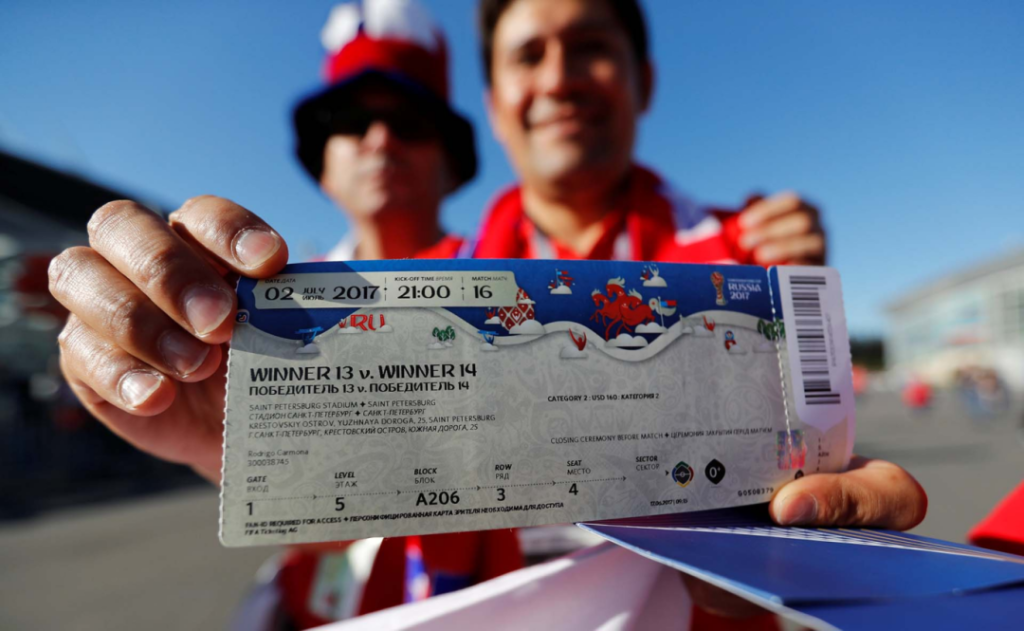
The organizers don’t seem to have too many worries about breaking even.
In previous interviews, they all said that the money they spent was for the long-term economic development of the city and the concept of environmental protection. They put forward a bold idea: the entire competition must achieve carbon neutrality!
FIFA has made a set of comparisons before: because Qatar has a relatively small land area (only about two-thirds of Beijing), thanks to the short distance between venues, less fuel consumption in traffic, and solar cooling technology, it is expected that the World Cup will Carbon emissions are less than a third of those of the last World Cup in Russia.
But when you factor in the carbon emissions from building the stadium (which accounts for 90 per cent of the total) and, because Qatar is too small to accommodate the 1.3 million fans who pour in, many will live in neighboring countries, Those flights are estimated to generate 800,000 tons of greenhouse gases from the daily round-trip flights to watch the game. It’s not a small number when added up—it’s equivalent to driving a passenger car around the world 80,000 times.
Compared with household air conditioners, according to the data released by a domestic brand this year, the carbon footprint of an air conditioner in its entire life cycle is 4119.38 kg CO2eq—equivalent to 194,000 air conditioners operating at the same time.
The organizers have previously stated that they will actively plant trees and manage waste as compensation. To that end, they planted 16,000 trees and nearly 700,000 nursery shrubs, commissioned 800 new electric buses, and a new 800-megawatt solar power plant.
But in the end, it’s all about money.
The carbon neutrality of this World Cup will be achieved mainly through the purchase of carbon credits. So far, Qatar has committed to purchase 1.8 million carbon offsets from the Global Carbon Council. But as of November 14, the Global Carbon Council had awarded it only 550,000 credits, which is just 15 percent of what is needed to achieve carbon neutrality for this World Cup. This, combined with the immaturity of the carbon offsetting system itself, has many questioning Qatar’s commitment to carbon neutrality.
Cooling the planet seems to be a bigger problem than cooling the stadium.










